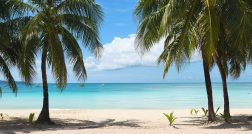Destination to Watch: Honolulu
Accessibility and diversity contribute to its tourism growth.
Honolulu and the Hawaiian neighbor islands (not including the Big Island) topped the list of U.S. destinations that travelers were most interested in visiting in the next two years, reported MMGY Global in its 2017–2018 Portrait of American Travelers. This interest was reflected in vacation ownership as well, with timeshares achieving an 88.2 percent occupancy rate in Hawaii for the second quarter of 2017, according to the Hawaii Tourism Authority. Owners staying at their home resorts accounted for 57 percent of that occupancy.
With Hawaii’s beaches and year-round temperate climate, this enthusiasm should come as no surprise. But there’s more to the island chain than balmy weather, and the particular interest in Honolulu suggests that urban attractions are also on travelers’ minds. “From sports venues to television events and even historic points of interest such as Pearl Harbor, Honolulu plays host to many travel points of interest,” says Bryan Ayakawa, resort manager at the Imperial Hawaii Vacation Club, in Honolulu.
Honolulu also boasts one of the most convenient public transportation systems in the state. The Bus reaches all parts of Oahu, as the island is only 44 miles long and 30 miles wide. In addition, there’s a bustling nightlife that appeals to younger generations, whom Ayakawa recommends developers try to attract. A balance between maintaining legacy owners and reaching new ones is key. “Many existing timeshares are in a race to modernize their respective marketing strategies to appeal to younger travelers while also stabilizing their existing owner base,” Ayakawa says. “Hawaii will always serve as a prosperous tourist destination; however, the balance of your target market as well as owner investment costs must always be monitored.”
Image credit: iStockphoto




